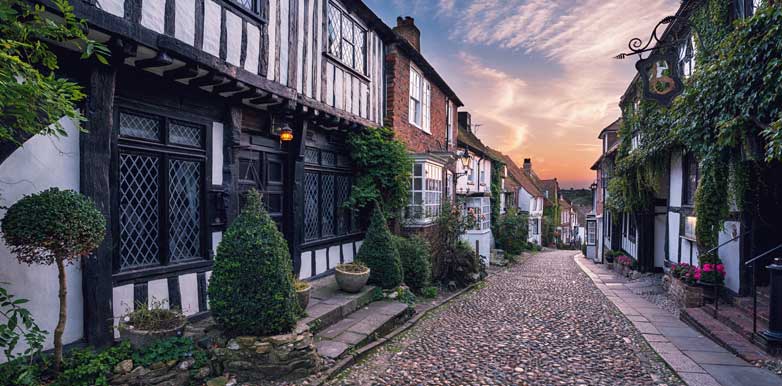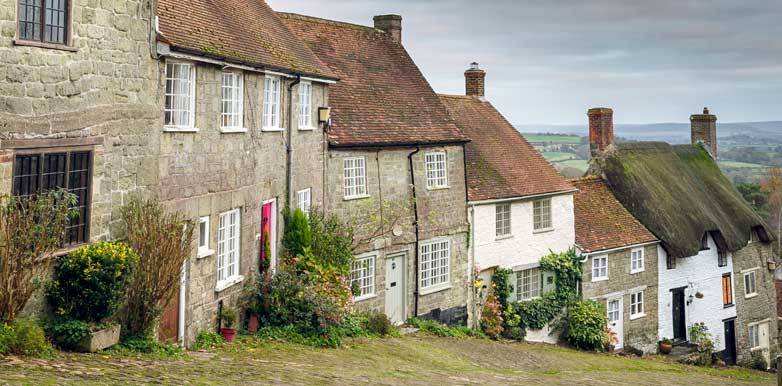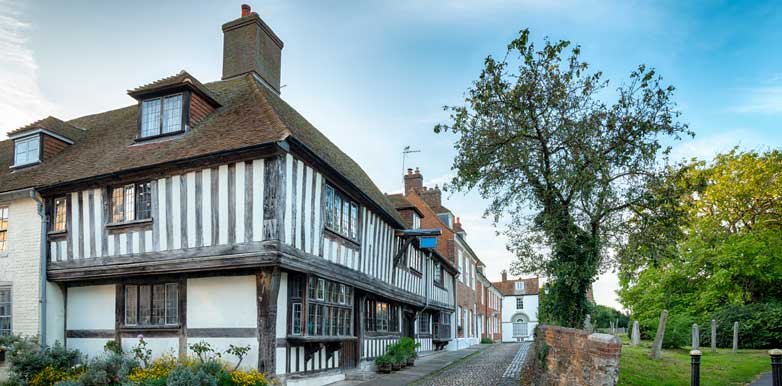A Guide to Listed Building Consent?

If you’ve recently moved to a listed property or are thinking of purchasing a renovation property that is listed, then you will probably have some questions around exactly what a listed building is and what and when you need listed building consent.
Throughout this article, we’ll be answering the most common questions about the hurdles you’ll need to overcome when doing work on a listed property. You’ll find important information on what aspects of a building and its surroundings are protected, how to apply for listed building consent, and much more.
What Is Listed Building Consent?
Listed building consent is when consent needs to be obtained before any work is carried out on a listed building. And, a listed building is one that has been placed on one of four lists that cover Wales, Scotland, England and Northern Ireland. All four of the lists are managed by Historic England, which is a public body whose mission is to help people care for, enjoy and celebrate England and its historic environment including its historic buildings.
Why Are Some Buildings Listed and Others Not?
A building is listed if there is a limited amount of buildings left of its kind and in its condition. It’s protected to capture a representation of what life was like when that building was built. Typically, the older a building is the less likely there are to be more of it and the more likely it is to be listed. Therefore, old buildings that were built before 1700 and up to 1850 are more likely to be listed than ones built more recently.
What Is the Difference Between Grade I, II, II* and III?
The most significant Grade is I and buildings of Grade I status are considered as buildings of exceptional interest. Typical buildings to fall into this category include churches, cathedrals, town halls, or castles. Grade II* is the next status down and are buildings that are considered to have particular importance, Grade II falls after this and is the most common grade with over 90% of listed buildings falling into this last group. Grade III does not exist however people sometimes refer to it as a list that local authorities keep of buildings of local interest.
What Does Curtilage Mean?
Curtilage is the area of land that a house sits on and defines the boundary that the homeowner owns. If a building is listed the listed status will sometimes also cover the curtilage too, this could mean gates, fences, walls and any other buildings that sit on this land are protected. Other buildings could include garden buildings such as sheds, summer houses, and log stores.
The curtilage of a listed building can also include any buildings attached to the listed building, for example, if you live in a semidetached house and the house that your home is attached to is listed yours may fall under its curtilage. This would mean that you would also need to gain listed building consent if you wanted to carry out any changes to your building.

How Do I Find Out If My Building Is Listed?
An easy way to find out if your property is listed (and by which grade) is to search the list on the Heritage England website. This will pull through a map based on your postcode and any listed buildings will be marked with a small navy triangle. The Listed Property Owners Guild can also provide support and information if you join as a member, including listings of specialist insurance companies and contractors who specialise in working on listed properties, and a free telephone helpline.
Who Gives Listed Building Consent?
Listed building’s consent will usually come from the local planning authority although in some exceptional circumstances it may come from the Secretary of State. If you want to alter your listed building you should contact your local authority Conservation Officer, it is advised to do this straight away and in particular before you book any contractors or purchase any materials.
Is Listed Building Consent Required for Repairs
Yes, you will need listed buildings consent for any work including repairs. Even if you intend to repair the building using like for like materials, it is advised to always apply for consent first.
What Alterations to a Listed Building Require Consent?
Any alterations that could affect the building’s historical interest will need consent and this could include both external and internal changes. It can also include both structural and decorative adjustments.
We’ve listed some of the main changes that will need consent below, however, this list is by no means exhaustive. Consent is required for anything that could affect the special interest of your home but what that special interest is can vary from house to house and the decision is made by the local planning authority. This is why it’s so important to contact them before beginning any work.
- If you are hoping to take down any walls in a listed building or its curtilage then you will need consent, this includes internal walls and the removal of any section of the house or a building in the curtilage. This also applies to the removal of gates, walls or railings that have been there since before 1948.
- The addition of extensions such as porches and conservatories or of any new buildings within the curtilage will also need consent and may need planning permission too (visit the planning portal for further information on this).
- New additions within the curtilage, for example, gates, fences or walls could need consent too.
- If you are painting the exterior of the house and it hasn’t been painted before or if you are changing the colour of the building you may need consent.
- Any change to the exterior that will affect the look of the building such as the addition of solar panels or even spotlights should be raised.
Do You Need Listed Building Consent for Changes to the Roof?
You may find that the roofing material of your building needs replacing or repairing at some point when you are living there. And, even if you replace the roofing material like for like you will still need to apply for listed building consent. Your local authority may also be particularly interested if you are planning to change the roofing structure at all.
Do You Need Listed Building Consent for Internal Alterations?
Yes, it is a common misconception that it is only what the public can see from the outside of a house that needs to remain unaffected. But a listed building needs to maintain its historical layout inside too and so you should contact your local authority if you are planning to make any changes. Even small interior changes might need consent as lots of small changes combined can have a big impact on the finished look.

How Do I Apply for Listed Building Consent?
You can simply download an application from your local authority’s website and you should also be able to find details for your local authority Conservation Officer there too. The timeframe on consent being given can vary, depending on your local authority’s process as well as the historical significance of your building.
Do I Really Need to Get Listed Building Consent?
The Planning Act of 1990, Listed Buildings and Conservation Areas states that “no person shall execute or cause to be executed any works for the demolition of a listed building or for its alteration or extension in any manner which would affect it’s character as a building of special architectural or historic interest unless the works are authorised”.
It is therefore an illegal offence should you proceed to make changes without listed buildings consent and you will likely be made to reverse the changes at your expense. But it could also result in court and consequentially a hefty fine of up to £20,000 or even a 6-month prison sentence. It is important to note that this punishment not only applies to the homeowner but the architect, surveyor and the builder as well.
What If a Listed Building Is Neglected?
If a listed building is neglected and begins to fall into disrepair or the owner refuses to carry out necessary works, then the council can apply pressure on the owner to carry out the work required. And if the owner still refuses, the council can even achieve the right to purchase the building without the consent of the owner (who would be compensated).
What If the Homeowner Can’t Afford to Repair a Listed Building?
There are several grant schemes available as well as tax relief schemes for owners of listed buildings that helps towards the upkeep of a listed building. However, Historic England also urge owners to provide tips on fundraising in your local community.
Is a Listed Building Worth More Money?
Generally speaking a listed building will be of higher value than one that is not, this is due to their historical interest and age. However, there are several things to consider before buying a listed building. This includes aspects such as insurance, maintenance and more.
Can I Nominate My Building to Be Listed?
If you think that a building has a particular historical interest that you believe should be protected, then you should contact Historic England to suggest that it is placed on one of the lists. In addition to buildings, monuments, parks, gardens and battlefields can be given a listed status.
More Information on What Works Need Listed Building Consent?
If you’re looking for new roofing material for your listed building you can view our selection online or give our friendly customer service team a call on 01295 565 565, you can also speak to them via the live chat on the website or by email at [email protected].
If you are still unsure of whether you’ll need listed building consent, contact your local authority. If you’ve already received consent and are looking to source appropriate materials, browse our vast range of roofing supplies online
Our award-winning team are also available on 01295 565 565 or via our online chat. They’ll help you source like-for-like materials whilst keeping the costs low. You should also follow us on Facebook, Instagram and Twitter, where we are sharing the latest home improvement tips and deals on roofing materials.
Please note: This guide on listed building consent has been written for information purposes and we therefore take no responsibilities for any decisions you make based upon its contents. Whilst we act as a retailer, we are not experts nor qualified on listed buildings. We therefore recommend that you contact the relevant authority.